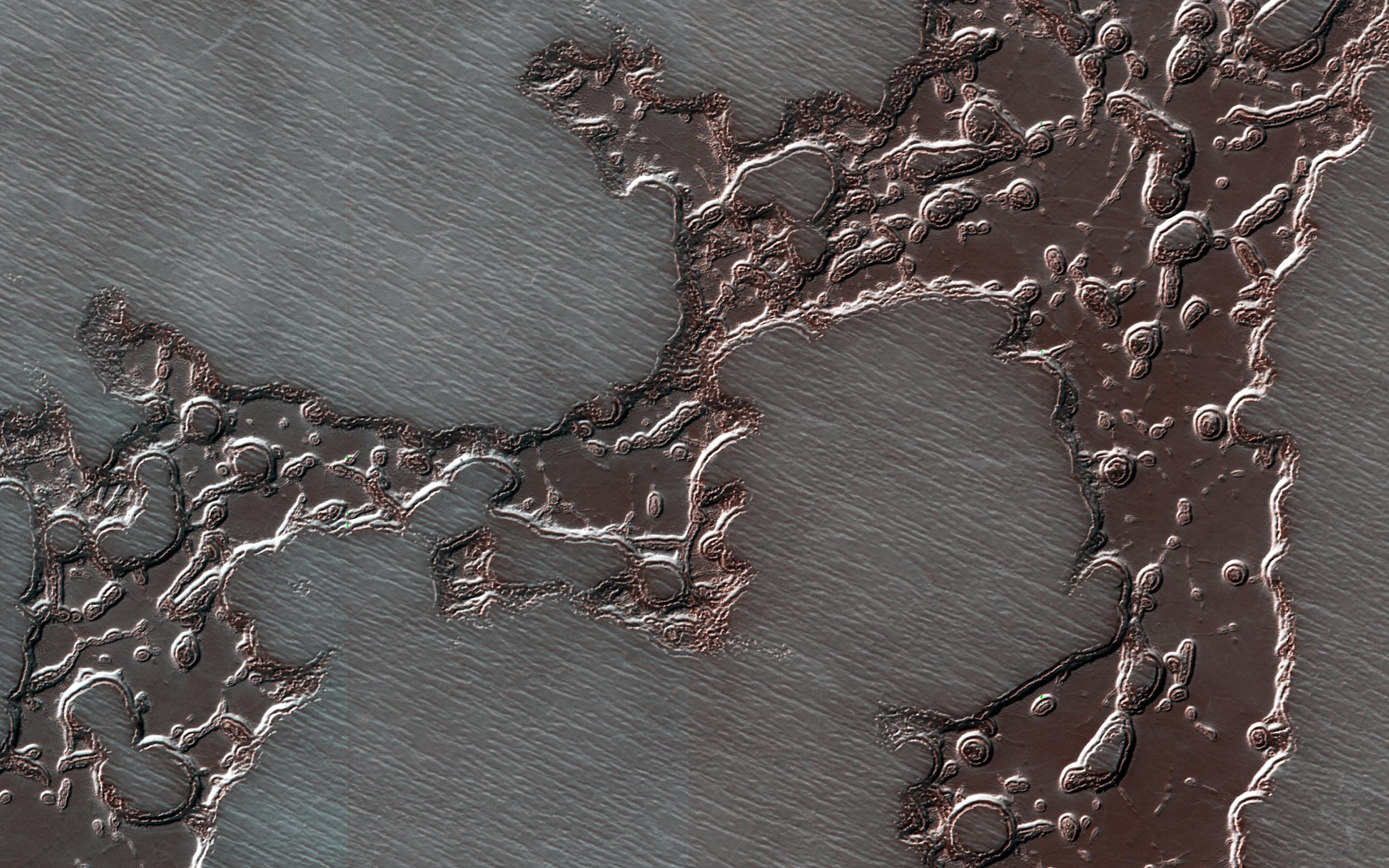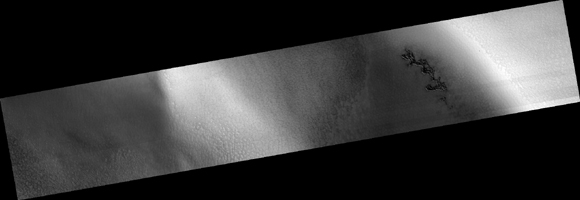
|
The Changing Ice Cap of Mars
- Click the image above for a larger view
- Full-Res JPEG (2880 x 1800) (775.8 kB)
- Full-Res TIFF (2880 x 1800) (15.2 MB)
Caption:

Map Projected Browse Image
Click on image for larger version
Photojournal Note : This caption was corrected by the HiRISE science team on Nov. 30, 2018.
A story of changes at the South Pole of Mars is told by its icy deposits. Remnants of a formerly more extensive deposit composed of dry ice form what is known as the south polar residual cap. Scientists call it "residual" because it remains after the much larger seasonal cap disappears each summer.
This mesa in this cutout is shrinking over time as the frozen carbon dioxide turns to vapor. Pits in this sheet of dry ice (that give the deposit an appearance resembling Swiss cheese) are enlarging over time, exposing an older surface below that is likely made up of water ice.
In contrast to shrinking ice caps on Earth, climate change is not to blame on Mars. Even as the walls of these pits ablate away the intervening flat surfaces are accumulating new dry ice. The total amount of frozen carbon dioxide at the South Pole may even be increasing.
The map is projected here at a scale of 50 centimeters (19.7 inches) per pixel. [The original image scale is 49.0 centimeters (19.3 inches) per pixel (with 2 x 2 binning); objects on the order of 147 centimeters (57.9 inches) across are resolved.] North is up.
Background Info:
The University of Arizona, Tucson, operates HiRISE, which was built by Ball Aerospace & Technologies Corp., Boulder, Colorado. NASA's Jet Propulsion Laboratory, a division of Caltech in Pasadena, California, manages the Mars Reconnaissance Orbiter Project for NASA's Science Mission Directorate, Washington.
Cataloging Keywords:
| Name | Value | Additional Values |
|---|---|---|
| Target | Mars | |
| System | ||
| Target Type | Planet | |
| Mission | Mars Reconnaissance Orbiter (MRO) | |
| Instrument Host | Mars Reconnaissance Orbiter | |
| Host Type | Orbiter | |
| Instrument | High Resolution Imaging Science Experiment (HiRISE) | |
| Detector | ||
| Extra Keywords | Color, Map, Water | |
| Acquisition Date | ||
| Release Date | 2018-11-27 | |
| Date in Caption | 2018-11-30 | |
| Image Credit | NASA/JPL-Caltech/University of Arizona | |
| Source | photojournal.jpl.nasa.gov/catalog/PIA22870 | |
| Identifier | PIA22870 | |
